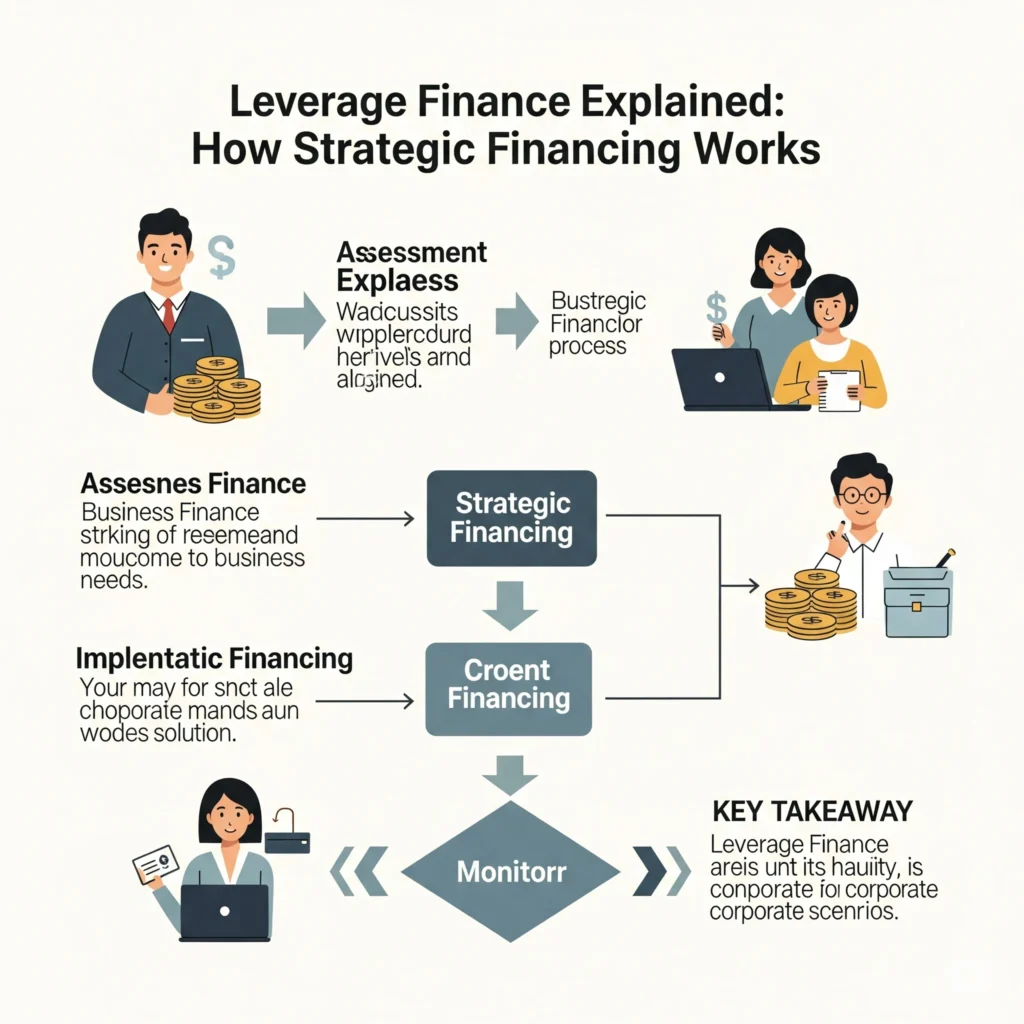Leverage finance is a widely used financial strategy in which businesses and investors borrow capital to fund large projects, acquisitions, or expansions. By using debt in place of equity, they aim to amplify potential returns—but not without taking on additional financial risk.
This article explains the fundamentals of leverage finance, how it works in practice, common use cases, the benefits and risks involved, and what businesses and investors need to know before considering this financing approach.
What Is Leverage Finance?
Leverage finance refers to the use of borrowed funds to finance investments, operations, or business expansions. Unlike traditional financing, where the capital comes mainly from equity, leverage finance heavily relies on debt. It’s often used in high-value transactions like:
- Acquisitions or buyouts
- Real estate and infrastructure projects
- Business recapitalization
- Large-scale capital expenditures
The goal is to boost return on equity by committing less of your own capital. If the investment generates profits that exceed the cost of debt, the return is magnified.
How Leverage Finance Works
1. Debt-Based Funding
The business or investor secures loans or issues bonds to raise capital. The borrowed amount is then used to fund the targeted investment—while only a portion of equity is involved, if any.
2. Return Amplification
If the project or investment performs well, the returns generated go primarily to the equity holders after paying off interest. This leads to a higher return on equity compared to using equity alone.
3. Financial Risk
The flip side is that losses are also amplified. If revenues fall short or if cash flow dries up, it becomes difficult to meet interest payments—leading to defaults or restructuring.
Common Applications of Leverage Finance
✔ Leveraged Buyouts (LBOs)
A company is acquired mostly through borrowed funds. The acquirer uses the assets or cash flows of the target company as collateral.
✔ Mergers and Acquisitions
Leverage finance is used to fund the purchase of other businesses or consolidate industries.
✔ Real Estate Development
Property developers often use leverage to fund projects, repaying loans once properties are sold or leased.
✔ Corporate Expansion
Businesses looking to expand production, enter new markets, or develop new products may use leverage to accelerate growth.
Instruments Used in Leverage Finance
| Instrument | Purpose |
|---|---|
| Term Loans | Fixed or floating-rate loans used for general financing or specific projects. |
| High-Yield Bonds | Issued by companies with lower credit ratings; offer higher returns to investors. |
| Bridge Loans | Short-term financing used to “bridge” the gap until longer-term funding is secured. |
| Mezzanine Debt | A hybrid of debt and equity, often used when traditional debt capacity is maxed out. |
Benefits of Leverage Finance
✅ Increased Capital Access
Businesses can fund major initiatives without waiting to accumulate equity or earnings.
✅ Enhanced Return on Equity
By using debt, the return on the actual equity invested can be significantly increased—assuming the venture is successful.
✅ Tax Efficiency
Interest on debt is usually tax-deductible, lowering the overall cost of borrowing.
✅ Strategic Growth
Companies can expand more quickly, enter new markets, or acquire competitors with less upfront capital.
Risks of Leverage Finance
⚠️ Higher Financial Risk
If the investment does not yield expected results, fixed interest obligations still need to be paid—regardless of performance.
⚠️ Credit Rating Impact
Heavy borrowing can affect a company’s credit rating, making future borrowing more expensive.
⚠️ Refinancing Risk
Debt eventually matures and must be repaid or refinanced. Unfavorable market conditions could make refinancing difficult.
⚠️ Insolvency
In extreme cases, excessive leverage can lead to default or bankruptcy if obligations can’t be met.
Measuring Leverage: Key Financial Ratios
- Debt-to-Equity Ratio = Total Debt ÷ Shareholder Equity
- Interest Coverage Ratio = EBIT ÷ Interest Expenses
- Debt-to-Assets Ratio = Total Debt ÷ Total Assets
- Leverage Ratio = Total Liabilities ÷ Total Shareholder Equity
These ratios help assess a company’s ability to manage its debt and signal potential red flags for investors and lenders.
Best Practices for Using Leverage Finance
- Conduct thorough risk analysis before taking on debt.
- Stress test your cash flow to see if it can support debt repayments under tough conditions.
- Balance short-term and long-term debt to reduce refinancing pressure.
- Consult with financial advisors to ensure the structure is aligned with your business goals and risk tolerance.
When Is Leverage Finance Suitable?
Ideal for Businesses That:
- Have stable and predictable cash flows
- Are expanding rapidly or acquiring other businesses
- Need to improve capital efficiency
Not Ideal For:
- Startups with inconsistent income
- Businesses in highly volatile markets
- Firms already carrying high levels of debt
Leverage Finance vs. Traditional Financing
| Criteria | Leverage Finance | Traditional Financing |
|---|---|---|
| Source of Capital | Primarily debt | Primarily equity |
| Risk | Higher | Lower |
| Return Potential | Higher | Moderate |
| Collateral | Often required | Usually not required |
| Flexibility | More complex | Simpler structures |
Conclusion
Leverage finance is a strategic tool used to unlock growth, execute major transactions, and boost returns with limited upfront capital. However, it comes with heightened financial responsibility and risk. When managed carefully, leverage can be a catalyst for accelerated progress. But without strong planning and risk controls, it can just as easily become a financial burden.
Always assess your capacity to repay and understand the full implications of leverage before committing to it.
✅ Explore More Financial Insights
For more insightful guides on financing, investing, debt management, and personal finance tips, visit FlorishLife.com—your go-to resource for smart, clear, and actionable financial information.
Disclaimer
This article is for informational purposes only and does not constitute financial or investment advice. FlorishLife.com does not offer financial services. Always consult with a certified financial advisor before making any financial decisions.
